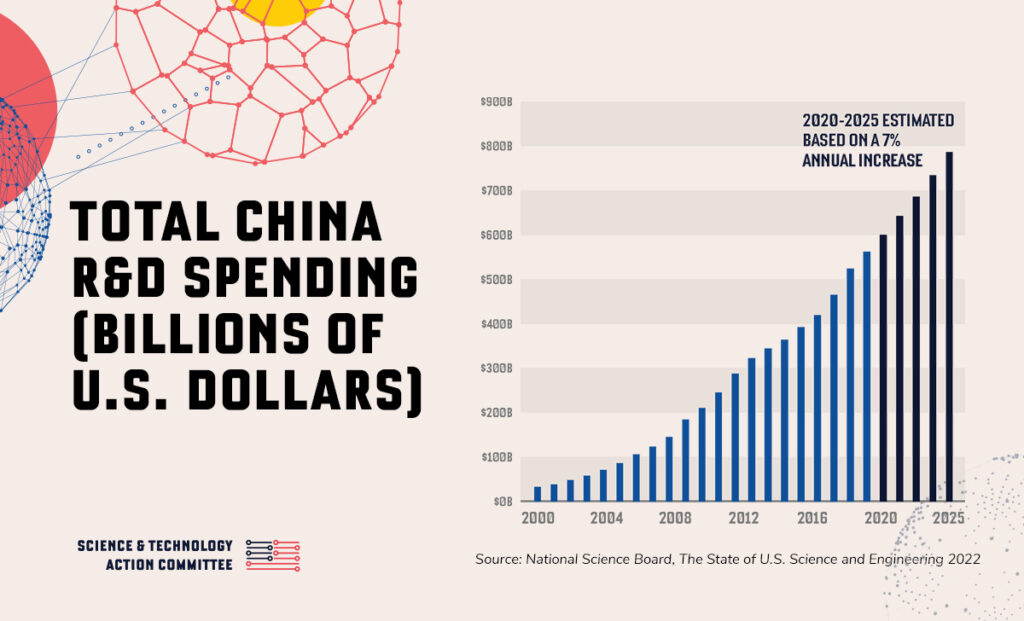SIX CHARTS THAT TELL AN ALARMING STORY
The U.S. is engaged in a fierce competition with China for world leadership in science, technology and innovation, which China may win unless Congress doubles funding for R&D and STEM education relative to GDP over the next five years. The impact to America would be devastating: fewer jobs, a weaker economy, more intrusive and unethical uses of technology and greater threats to national security.
These 6 charts illustrate the steady march of China’s investments and the impact of the country’s increased spending on education and innovation.
U.S. LEAD IN R&D INVESTMENT IS NEARLY GONE
For the past two decades, China’s strategy for competing with the United States economically and militarily has been to boost its STEM workforce and advanced manufacturing capabilities. Business leaders agree there is an immediate and urgent need to build our technology workforce if we are to maintain our historic preeminence in science and technology. From 2000 to 2019, China’s contribution to global R&D rose from 5% to 22% while the U.S. declined from 37% to 27% (Chart 1). During this period, China’s gross R&D expenditures rose from $32.9 billion to $525.7 billion (Chart 2). If China continues to increase its R&D investment by 7% annually, the goal it laid out in its most recent 5-year plan, China’s R&D expenditures will surpass the U.S. investment unless Congress increases federal investment.
Chart 1:
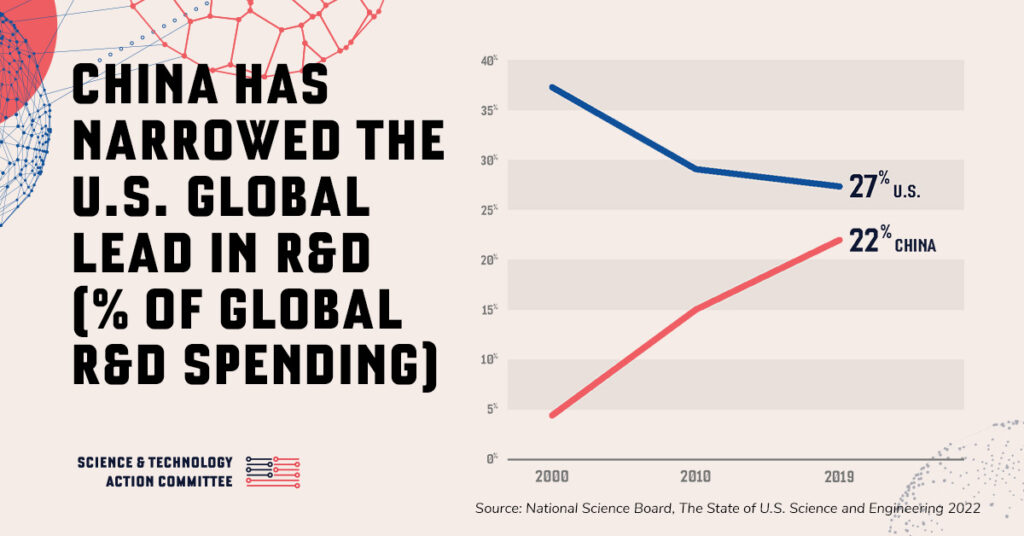
Chart 2:
CHINA’S GOVERNMENT INVESTS BIG IN SCIENCE
China’s government has increased the percentage of GDP it spends on R&D from less than 1% in 2000 to 2.4% in 2020. The United States also has increased overall R&D spending as a percentage of GDP since 2000, but all of that increase has come from private investment. U.S. federal R&D investments have stayed at or under 0.8% for the last decade.
Chart 3:
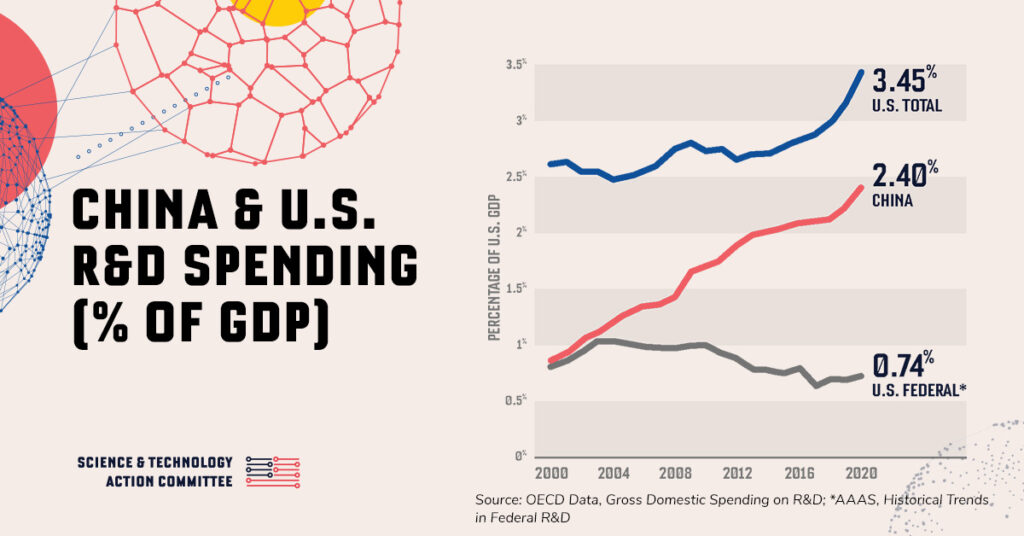
Chart 4:
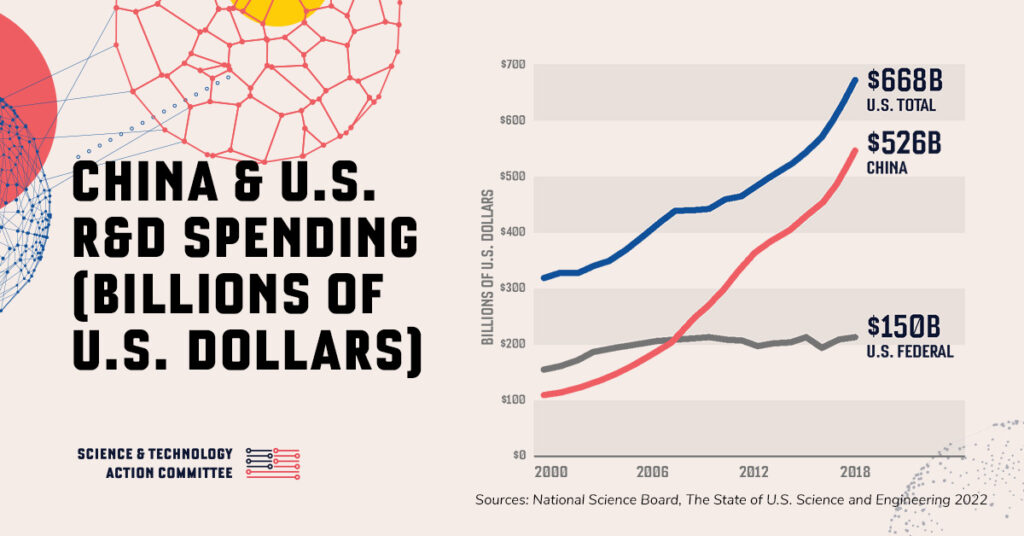
CHINA’S RAPID ASCENSION IN TALENT AND PUBLISHED ARTICLES
In a national meeting in October 2022, Chinese President Xi Jinping called on his country to “regard science and technology as our primary productive force, talent as our primary resource and innovation as our primary driver of growth.”
China’s talent dominance, key to the research that leads to innovation, can be seen in the number of annual STEM PhDs the country graduates. By 2025, China is projected to nearly double the number of U.S. STEM PhD graduates.
Chart 5:
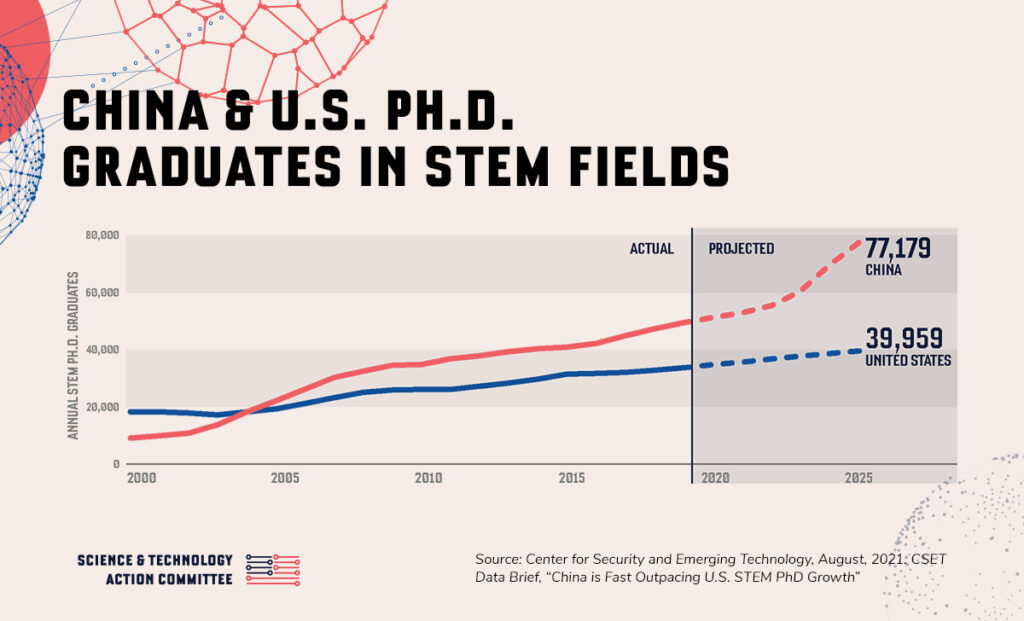
Chart 6:
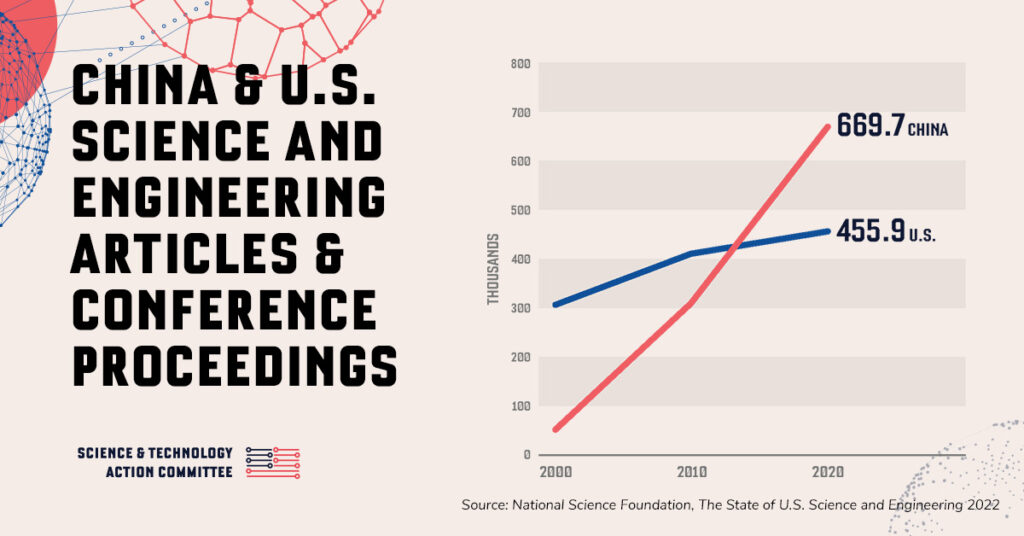
Another common measure of scientific performance is the publication of original peer-reviewed research articles in scientific journals. These articles are how scientists share theories and discoveries. In 2020, China published 38% more peer-reviewed articles than the United States.
These six charts show China’s commitment to fund R&D for economic strength, a healthier population and military advantage. The question is whether the U.S. will defend or cede our leadership position.
You can download the STAC Rise of China Memo here.

